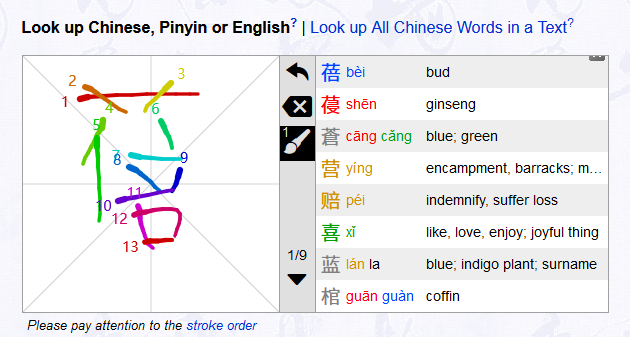We get a lot of translation requests at Chinese.SE, and while we'd like to help, there's sometimes very little about the Chinese language in the question, and a lot about the procedure for obtaining plaintext from a photo.
Once we have the plaintext, we can simply input the plaintext into e.g. Google Translate or Yabla to get an approximate answer.
The aim of this post is to develop a self-help guide for use as a duplicate target. Instead of closing these questions as "off-topic" and linking to an impractically long list of (mostly inapplicable) resources, it'd be better to close as a duplicate of this self-help guide.
Question: How do I self-answer "What does this say?"
Answers:
- Input the text into optical character recognition (OCR) software.
- What about handwriting?
- It's also possible to input characters by drawing them by hand.
- We can also search for a character by radical.
- Searching modern characters by any of their constituent components.
- Searching archaic character forms by any of their constituent components.
- What are some commonly encountered Chinese characters?
Still don't know? Ask on Chinese.SE but please show prior effort. For example, I asked this question: What does 我们已经帮您踩过了 mean in this peculiarly translated escalator sticker? and you can see what happened.
For things like seals, stamps, calligraphy, etc., it's sometimes impossible to get a translation without asking someone who can read Chinese (and sometimes even native Chinese speakers struggle with this).
There are Internet communities which welcome these questions: like Reddit's /r/translator (and /r/ChineseLanguage has a pinned 翻译 Translation Thread!).





























